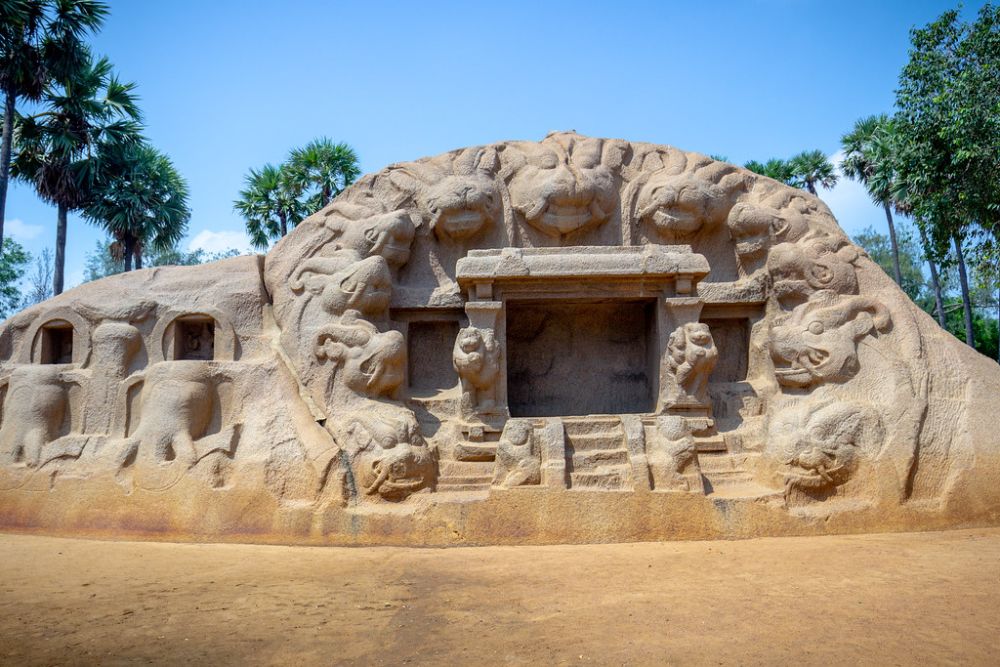

Located near the coastal town of Mahabalipuram in Tamil Nadu, India, the Tiger Cave is an intriguing rock-cut Hindu temple complex that dates back to the 7th-8th century. It was carved during the Pallava dynasty under the patronage of King Narasimhavarman I (also known as Mamalla), after whom the town of Mahabalipuram gets its name, Mamallapuram.
The site is named 'Tiger Cave' due to the crown of carved tiger heads that form a part of the cave architecture. Historically, it is believed to have been used as an open-air theater or a gathering place for cultural events, given the presence of a large, open forecourt. It is located around 4 kilometers to the north of the main Mahabalipuram sites and serves as a representative of the rich architectural prowess of the Pallavas.
The significance of Tiger Cave as a tourist destination has grown over the years, as visitors to Mahabalipuram seek to explore its cultural depth and architectural wonders. Mahabalipuram itself is a UNESCO World Heritage Site famous for its rock-cut caves, temples, and massive open-air reliefs such as the Descent of the Ganges or Arjuna's Penance.
As part of the group of monuments at Mahabalipuram, Tiger Cave has seen a steady increase in tourism, especially since the late 20th century when the Indian government, along with UNESCO, took steps to preserve and promote the site. Indeed, it is often included in the itineraries of history buffs, cultural enthusiasts, and art lovers who visit this region.
In recent years, tourism in Mahabalipuram, including the Tiger Cave, has been influenced by a variety of trends:
Additionally, organizations such as the Archaeological Survey of India continue to work on the conservation and preservation of sites like Tiger Cave, ensuring their endurance for future generations of visitors.